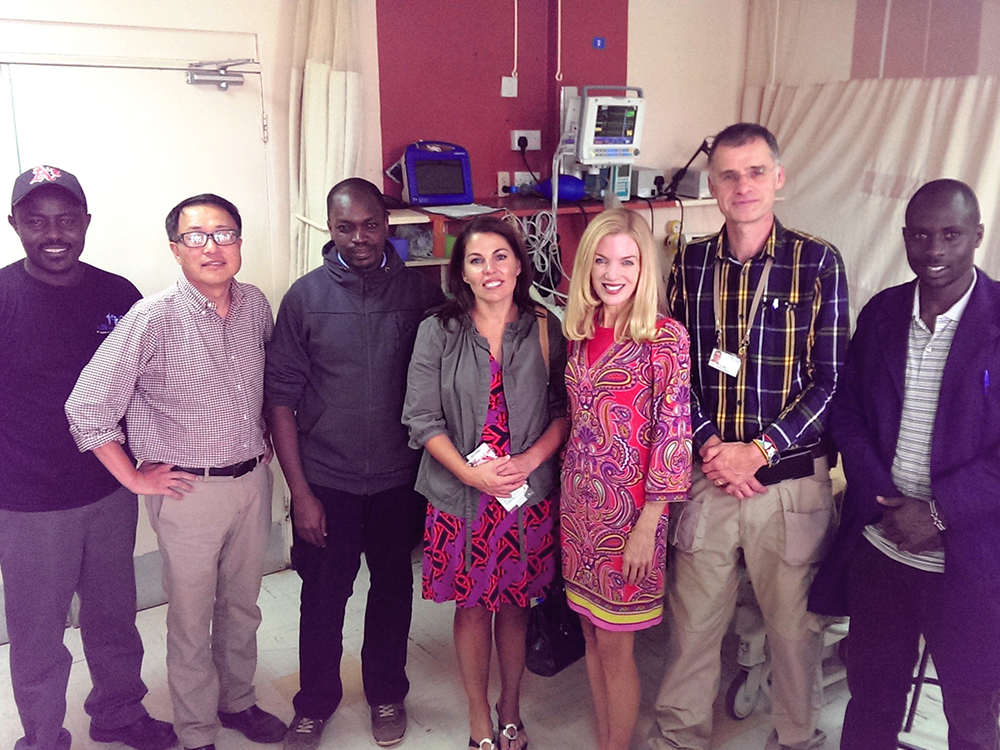How to Determine if Donated Medical Equipment is Your Best Option
December 19, 2018

As a non-profit professional, you know that the end of Q4 is the most exciting part of the year. The end of the year is when all of your hard work pays off, and you receive confirmation from donors that medical equipment is headed your way.
It is estimated that in some developing countries, nearly 80% of medical equipment is funded or donated by international donors or foreign governments. With so many developing areas relying on such a great percentage of donated medical equipment, it is important to confirm that the equipment your organization receives is truly the best option. Non-profit organizations serve as the link between the donors and the clinics receiving the equipment, so not only is it your responsibility to confirm that the donation is quality equipment, but you should also determine whether it is suitable for the eventual recipient.
Here are a few questions to keep in mind when considering the usefulness of donated equipment:
Is the donated equipment complete and in working order?
Why is the facility or donor donating this specific equipment to you?
Is the equipment suitable for the intended recipient?
Is donating anything better than nothing at all?
Is the donated equipment complete and in working order?
Shipments can include a great looking piece of equipment, however are all necessary accessories included? Imagine that you just received a shipment of donated equipment and you open the box. To your excitement there are various monitors included in the shipment. If the accessories are included, confirm if they are functional. Does the monitor power up and is it in working order?
Often, the recipient does not realize that if a monitor arrives without accessories, the accessories can cost as much, if not more, than replacing the entire monitor. There are times that accessories can cost up to $3,500 USD to replace. Also, a monitor cannot be fully tested without accessories and the additional cost to repair non-functioning equipment can quickly exhaust any budget. You can easily become upside down on a donation that is not complete and may not ever function properly. In comparison, a new monitor with basic five parameters, including all new accessories and a one-year warranty, can be supplied for approximately $1,250 USD.
Why is the facility or donor donating this specific equipment to you?
It is okay to ask a donor why they are donating this specific piece of equipment to your organization. What are their intentions? Do your due diligence and confirm if the facility is donating equipment because they are replacing items or did someone on the mission team inform the donor of your current needs? Does the hospital or clinic have excess equipment to spare? Are they discarding equipment and offering it to you beforehand? Be sure to check for any expiration dates, specifically with disposables and or medicines.
It’s also important to consider whether the ongoing cost of outdated equipment could create an issue or become a burden to maintain. A red flag that could indicate future problems with donated equipment would be if your donor or donating facility is requesting a donation letter and giving you a specific amount that seems excessive. Research the replacement cost of the equipment online or contact a medical equipment provider and ask what the item would cost to replace.
For example, if you received a donated Amsco 2080 manual surgical table that is over 20 years old, no one supplies spare parts for the table, and the donor is requesting a donation letter with a value of $8,000 USD. These are great indicators that you should ask the donor why they feel that value for the table is appropriate, and ask yourself if this is table is even a good option for your non-profit.
Is the equipment suitable for the intended recipient?
Donors often have the best intentions when offering donated equipment to a non-profit organization. They are happy to assist you with your equipment needs and want to help contribute to your cause. However, these same donors might not be aware of the gap in technology that can occur in a medical facility in a developing country. There might not be local support for the repair and ongoing maintenance of the machine. If the equipment is too sophisticated to maintain, it may never even be used.
Up to 70% of medical equipment in the Sub-Saharan Africa region sits unused due to lack of training, service, and or support. This staggering figure should be considered by those donating equipment, and by non-profits determining if the equipment is suitable for a specific location. You do not want to spend time and resources to procure and ship equipment that will never be used and will eventually be discarded.
Another key factor is the electrical voltage of the donated equipment. If a facility in the USA is donating 110-volt equipment and the receiving facility requires 220 volts, make sure a step-down transformer can be used and confirm whether they are available. Your organization might have to purchase the transformers separately at an additional cost. It is important to know that using a transformer can sometimes cause equipment to break down faster, and some transformers may not work at all. If this is the case, the donation might not be suitable for your recipient.
For Facilities Who are Considering Donating Equipment this Year:
Is donating anything better than nothing at all?
This is an easy question to answer. The answer is no! The easiest way to determine if your gift will be beneficial is to consider yourself a partner with the recipient of donated equipment. What are the current needs of the facility? What can the facility and staff members maintain, service, and properly use in their local environment?
Ask your partners what they truly need for the facility and not just what they would be willing to accept. For example, if you have an incubator to donate and the recipient only treats adults and pediatric patients, there is no need for an incubator and it would not be a suitable donation.
Continued efforts to support international clinics and hospitals is beyond inspirational and can be fulfilling for all parties involved. By focusing on these four key questions, finding a perfect match between donor and recipient will be easier and more attainable. When in doubt, contact reputable companies that supply new and New medical equipment to assist you with making the best equipment selection for donation.
Visit https://medvesttech.com/globaloutreach for current equipment information, client case studies, and more.


